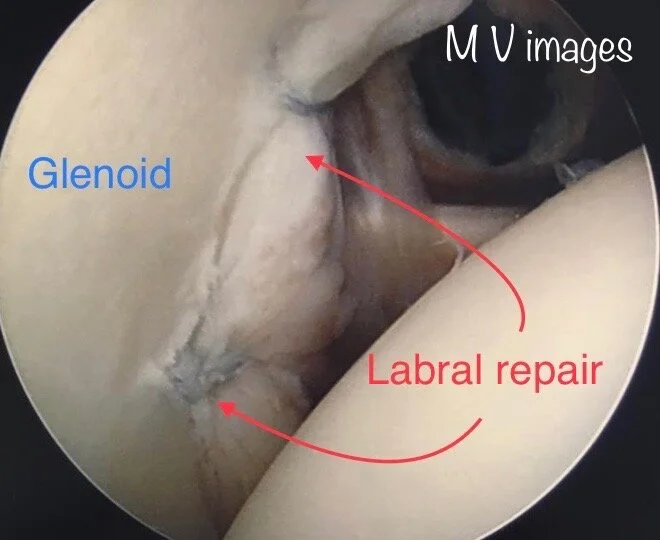
Shoulder instability
Shoulder instability & dislocation
Recurrent shoulder dislocations can occur due to a structural abnormality / injury, or due to the muscles around the shoulder not working in a co-ordinated manor.
Diagnosis
A detailed history of symptoms and shoulder examination will provide many clues to the cause of the dislocations.
Further routine investigations include a shoulder X-ray and MRI scan to aid making the right diagnosis.
The labrum is a soft tissue ring that runs around the shoulder socket (glenoid).
Trauma to the shoulder can cause a labral tear
Labral tears can cause pain and / or a shoulder that ‘feels loose’ and even dislocate.
Labral tear and shoulder pain
Treatment
Specialist shoulder physiotherapy may help improve symptoms, but requires time and commitment.
Arthroscopic (keyhole) shoulder surgery can be performed when non operative treatments fail to resolve symptoms.
Surgical repair using Keyhole techniques
This image from inside the shoulder shows the labrum reattached to the glenoid. Once healed this results in a stable shoulder.
Mathew has performed this keyhole surgery through two small 1.5cm incisions.
This image from inside a shoulder shows the labrum torn off the edge of the glenoid resulting in a loose feeling shoulder that may dislocate.
Mathew uses specialist equipment and surgical techniques developed by Arthrex, a global medical device company
Recovering after shoulder instability surgery
After surgery a sling is required for 6 weeks while in bed and when outdoors
Rehabilitation with physio starts immediately
Driving is not advised for around 6-8 weeks following surgery
Returning to work depends on the nature of your job - (office based 4-6 weeks / manual work 8-12 weeks)
No contact sports or heavy lifting for 6 months following surgery


